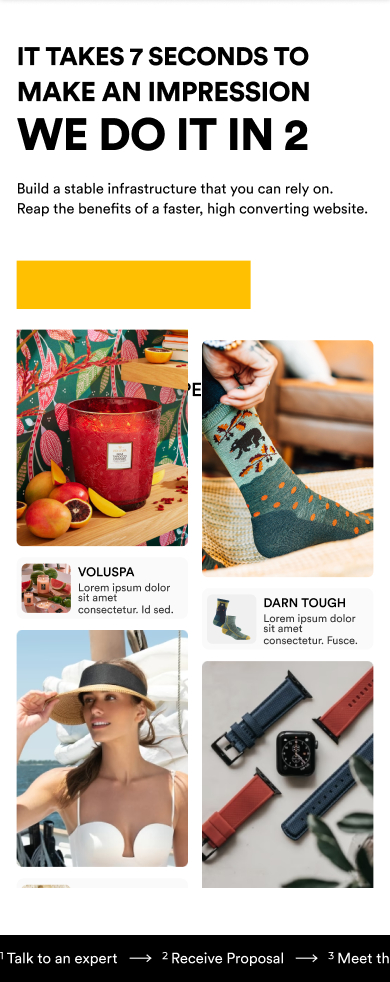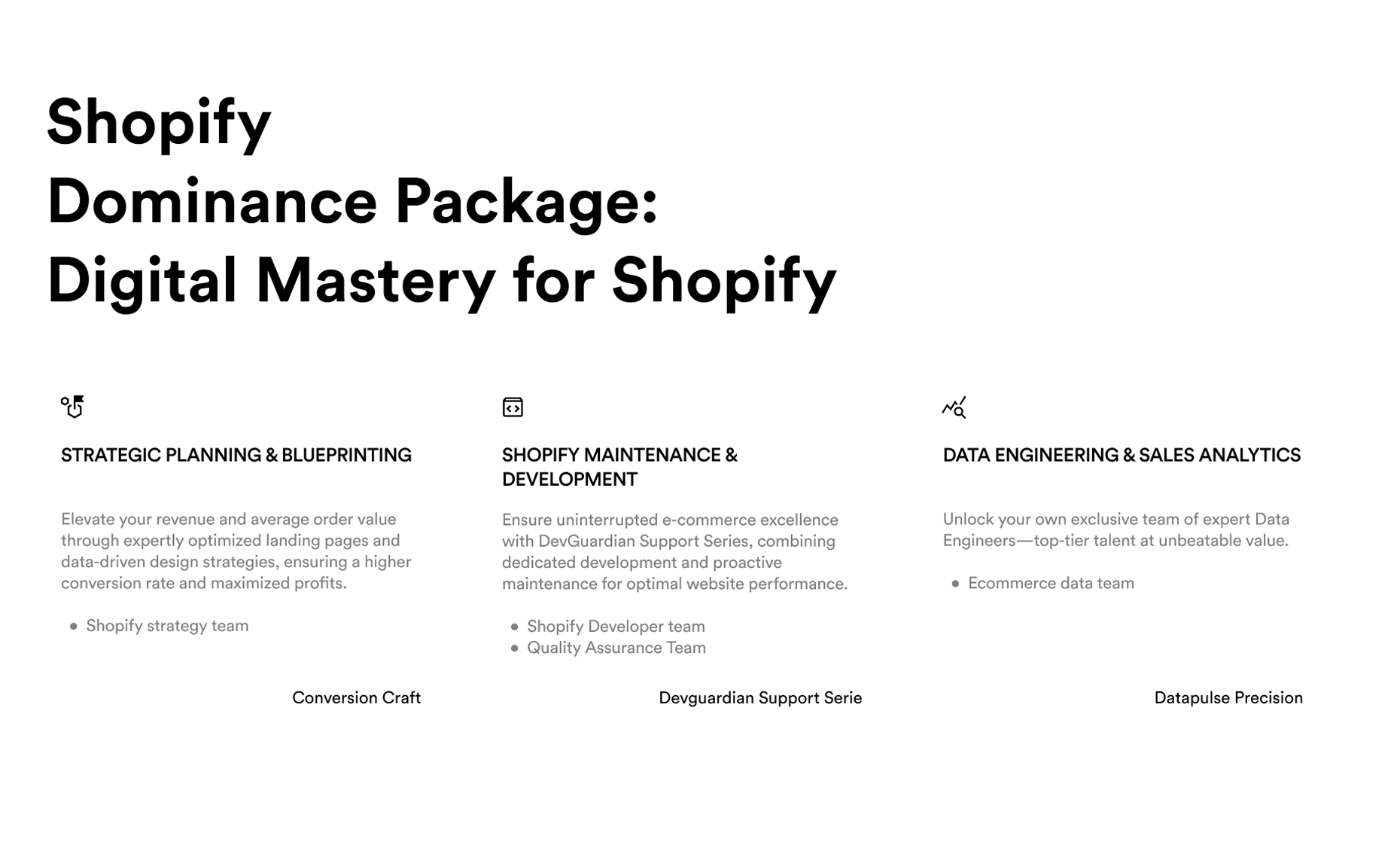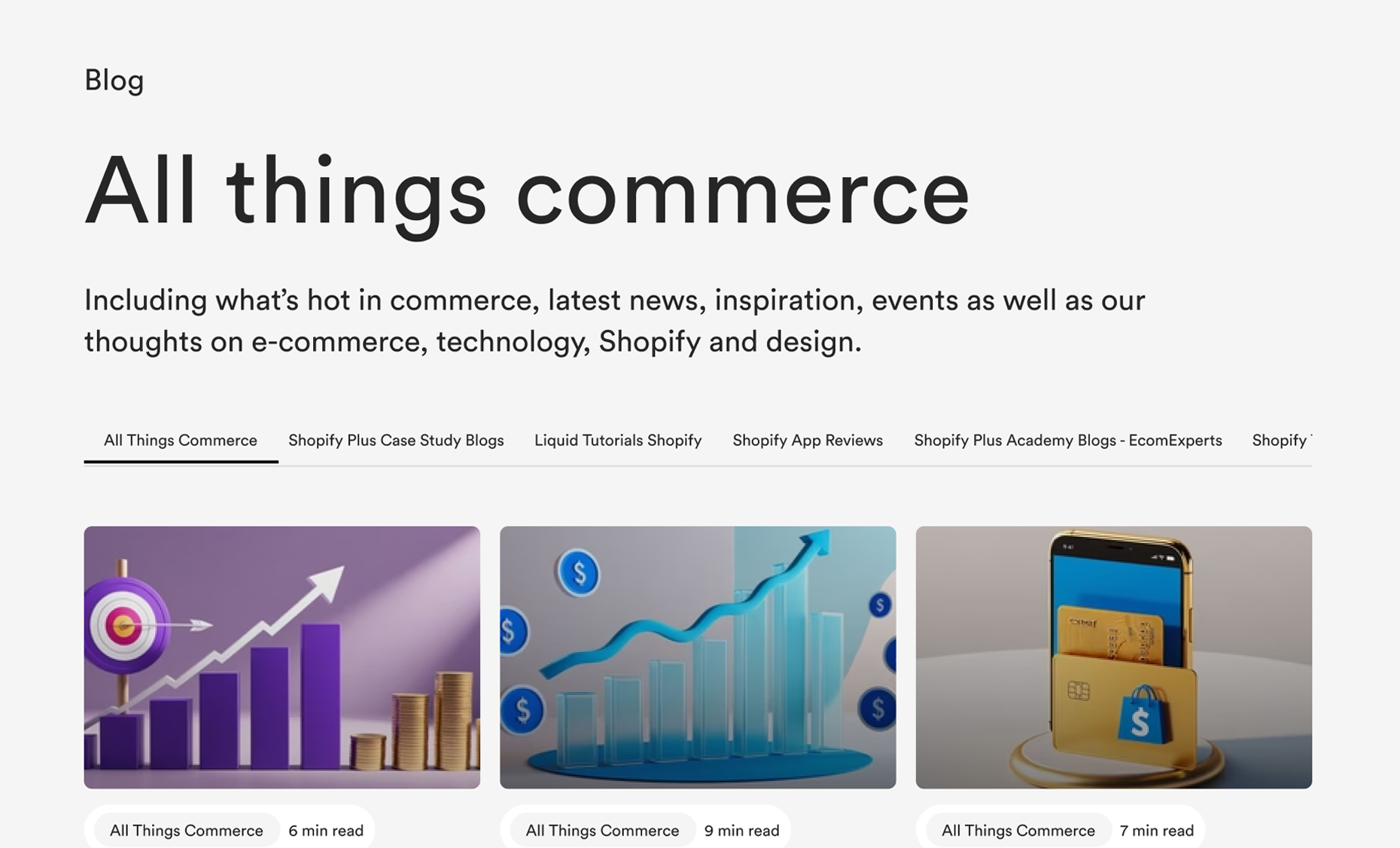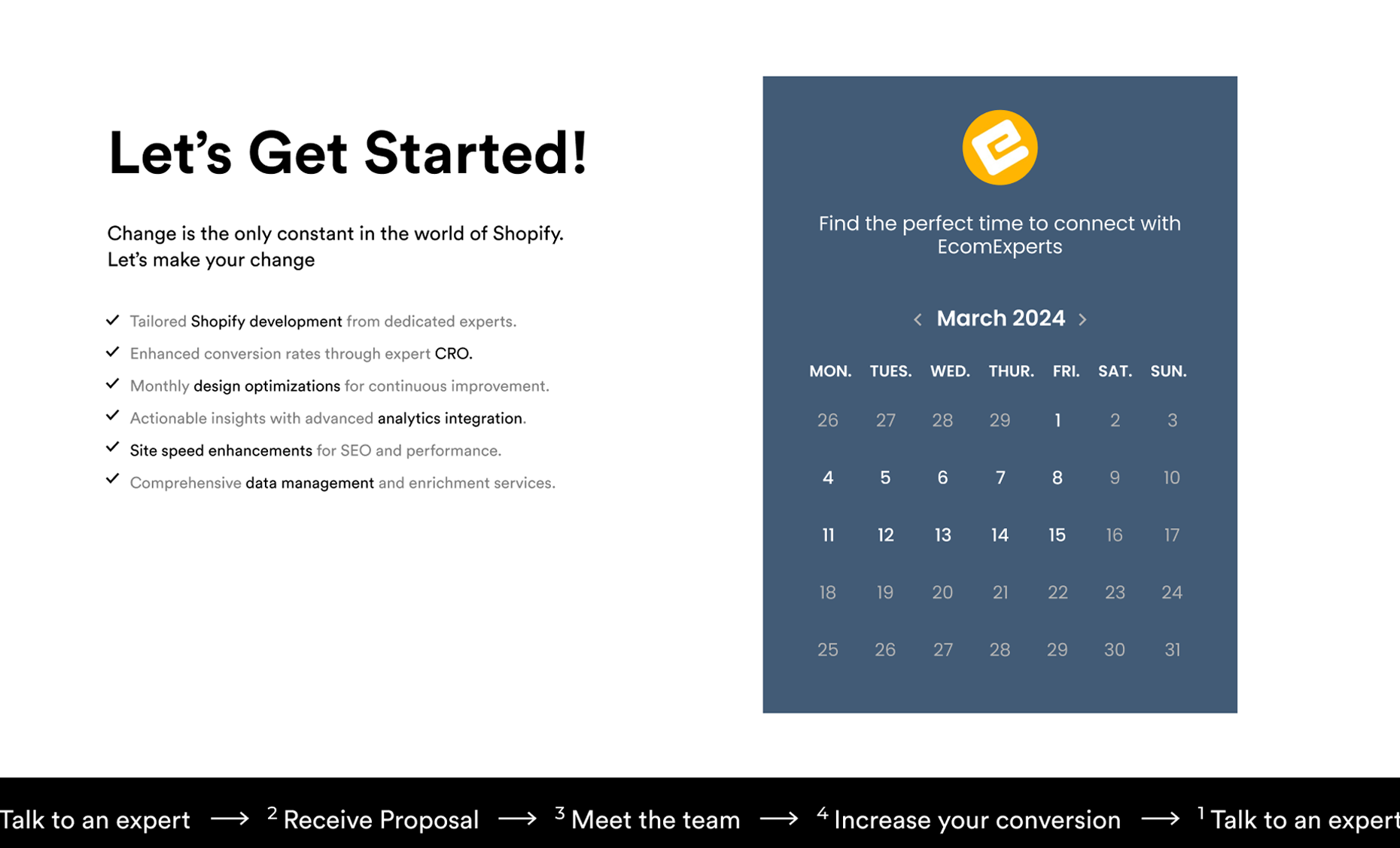Shopify POS Links Depreciation
If you’re a Shopify merchant or developer, you may have already seen the notification about the upcoming deprecation of Shopify POS Links, cart app extensions, and product recommendations.
Starting October 18, 2024, Shopify will no longer allow the creation of these extensions, and by February 28, 2025, they will be fully retired.
This change will impact how many Shopify stores manage their POS systems, leaving businesses with the task of migrating to POS UI Extensions.
The transition might sound daunting, but it’s a necessary move to future-proof your business and align with Shopify’s evolving technology.
In this blog, we’ll walk you through why this shift is happening, what it means for your store, and most importantly, how to navigate it smoothly—well before the 2025 deadline.
Why Shopify Is Moving to POS UI Extensions (And What It Means for Your Online store)?
To understand why Shopify is making this shift, it helps to recognize the evolving demands of modern e-commerce.
Shopify’s POS system is a critical part of many businesses, especially for those with brick-and-mortar stores or pop-up shops. By transitioning from POS Links to POS UI Extensions, Shopify aims to:
- Improve Customization: POS UI Extensions provide more flexibility for customizing how your POS interacts with both Shopify and third-party apps. This means smoother workflows and a more user-friendly experience for merchants and customers alike.
- Enhance Integration: POS UI Extensions are built with future scalability in mind. They allow for more seamless integration with new Shopify features and third-party tools, ensuring your store stays updated with the latest technology without disruptive migrations in the future.
Why Now?
Shopify is focusing on creating a more streamlined and future-proof platform for businesses, particularly those on Shopify Plus or using Shopify POS systems across multiple channels. This transition allows merchants to provide a more cohesive, secure, and personalized checkout experience.
As of 2024, Shopify has over 2 million active stores, many of which rely on POS systems for both online and offline transactions.
With such a large ecosystem, Shopify's move towards UI Extensions ensures that stores can handle increasing customer demands while remaining agile in a competitive market.
What Does It Mean for Your Shopify Store?
If your store is currently using POS Links, cart app extensions, or product recommendation features, these will soon be outdated.
Failing to make the transition could result in disruptions to your POS functionality, lost sales, and a poor customer experience.
However, by transitioning to POS UI Extensions, you will gain access to a future-ready POS system that can adapt as Shopify releases new features.
It also opens up opportunities for you to further customize the customer journey, reduce checkout friction, and improve store performance.
For businesses that want to stay ahead, now is the time to start preparing. And if you’re feeling overwhelmed by the technical details, consider reaching out to EcomExperts—we specialize in helping Shopify merchants adapt to new platform changes and ensure their stores are running smoothly before the deadline.
What Are Shopify POS UI Extensions? (And Why Are They Important?)
Now that Shopify is phasing out POS Links and other older technologies, let’s break down what POS UI Extensions are and why this transition is so crucial for your business.
At a high level, POS UI Extensions are the next evolution of Shopify’s POS system, designed to offer more flexibility, customization, and seamless integration with both Shopify’s core platform and third-party applications.
Simplified Definition of POS UI Extensions
In simple terms, Shopify POS UI Extensions are tools that allow developers and merchants to customize the user interface of their Shopify POS system.
These extensions enable you to add new functionality to your checkout experience, tailor workflows for your staff, and even create custom widgets that appear in your POS interface—all without disrupting the overall system.
For example, let’s say you want to offer an exclusive discount during checkout or add a custom loyalty program widget to the POS screen.
With POS UI Extensions, this is possible without touching the underlying code of the Shopify platform itself. This customization allows merchants to create a unique, branded checkout experience that can improve customer satisfaction and increase sales.
Key Benefits of POS UI Extensions
-
Enhanced Customization POS UI Extensions allow for greater personalization of the POS system. Whether you want to modify how your checkout looks or add specific workflows, these extensions give you more control over the experience you offer to customers and staff.
- Example: A retail store might customize its checkout to include prompts for upselling additional products based on what’s in the customer’s cart.
-
Seamless Integration with Shopify and Third-Party Apps One of the biggest advantages of POS UI Extensions is how smoothly they integrate with both Shopify’s built-in features and third-party applications. Whether you use apps for inventory management, customer loyalty programs, or payment processing, POS UI Extensions ensure that everything works together seamlessly.
- Example: If you're using an app for customer rewards, you can now integrate it directly into the POS system, so your staff can apply loyalty points or discounts during checkout without switching screens.
- Future-Proof Your POS System Shopify is focusing on POS UI Extensions because they’re built with the future in mind. By transitioning to these extensions now, you’re preparing your store for future updates and innovations Shopify will roll out. Staying ahead of the curve means you won’t face sudden disruptions down the road as Shopify continues to develop and improve its platform.
Why Shopify Is Retiring POS Links and Extensions
The move to POS UI Extensions reflects a broader trend in e-commerce technology: the shift toward modular, API-driven systems that can be easily updated, customized, and scaled.
By retiring POS Links, Shopify is encouraging merchants to adopt these newer technologies that provide:
- Better Performance: Older extensions can slow down your POS system, especially during high-traffic times like Black Friday or major sales. UI Extensions, on the other hand, are optimized for speed and efficiency.
- More Security: As cyber threats continue to grow, Shopify wants to ensure that its POS systems are equipped with the latest security features. POS UI Extensions adhere to stricter security standards, reducing the risk of data breaches or hacking attempts.
How Does This Affect Your Store?
If your store relies on custom POS workflows or uses third-party apps integrated via POS Links, you’ll need to rebuild those integrations using the POS UI Extensions before the February 2025 deadline.
Otherwise, you risk losing those features once the older technology is fully deprecated.
If you aren’t sure how to rebuild these extensions or are concerned about potential disruptions to your business, this is where partnering with Shopify experts can make the transition smoother. EcomExperts can help audit your current setup, identify any areas that need to be updated, and ensure a seamless transition to POS UI Extensions—all while keeping your store running smoothly.
How to Transition from Shopify POS Links to POS UI Extensions
Now that you understand why Shopify is retiring POS Links and transitioning to POS UI Extensions, let’s dive into how you can make this migration smoothly.
Whether you’re running a single storefront or multiple locations, starting early and following a structured process is crucial to avoid last-minute disruptions.
Here’s a step-by-step guide to ensure your transition from Shopify POS Links to POS UI Extensions is as seamless as possible.
Step 1: Audit Your Current POS Setup
The first step in transitioning is to evaluate which of your current features, extensions, or workflows rely on POS Links or any other deprecated technology (e.g., cart app extensions).
Understanding which parts of your POS system will be affected allows you to prioritize the most important functionalities that need to be rebuilt using POS UI Extensions.
- Inventory of Existing Features: Make a list of all custom POS features, including integrations with third-party apps, loyalty programs, or checkout flows that rely on POS Links or older extensions.
- Assess Impact: Determine how critical each extension or workflow is to your business operations. For example, if your loyalty program or cart functionality is crucial for customer retention, these features should be the first to rebuild using POS UI Extensions.
Pro Tip: Consider running an internal audit or using tools available in the Shopify Partner Dashboard to identify which extensions are impacted by the deprecation. This gives you a clearer picture of what needs to be addressed first.
Step 2: Begin Rebuilding with POS UI Extensions
Once you’ve identified which POS Links or extensions need to be replaced, it’s time to start rebuilding them using Shopify’s POS UI Extensions. While this process might seem complex, it’s designed to offer more flexibility and customization options than the older technologies.
- Access Shopify’s POS UI API Documentation: Start by reviewing the documentation Shopify provides on how to build with POS UI Extensions. This will give you a technical breakdown of the API, how it works, and how it can be integrated into your current store setup.
-
Rebuild Key Features First: Focus on rebuilding the most critical features of your POS system first, such as checkout flows, customer data entry, and integrations with important third-party apps like inventory management systems or payment gateways.
- Example: If you have an integration with a third-party app that manages your customer loyalty points, you’ll need to rebuild this feature using the POS UI Extensions API to ensure it continues functioning after the February 2025 deadline.
Step 3: Test Your New POS UI Extensions
Testing is an essential part of this transition. Once you’ve rebuilt your custom features using POS UI Extensions, you’ll need to thoroughly test them to ensure they’re working as expected.
- Internal Testing: Use Shopify’s POS sandbox environments to simulate real-life scenarios and test how your new POS UI Extensions handle key tasks, such as processing payments, updating inventory, and managing customer data.
- Stress Test for Black Friday or High Traffic Periods: If your business experiences seasonal sales spikes, such as during Black Friday or other holiday events, simulate these traffic levels to ensure that your system can handle the increased load without issues.
- User Feedback: Gather feedback from employees or team members using the POS system in a real environment to catch any bugs or areas where user experience could be improved.
Step 4: Prepare for the 2025 Deadline
Even if you’ve completed your migration to POS UI Extensions, it’s important to continue preparing until the February 28, 2025 deadline.
This involves making sure that all your stores are up-to-date and that there’s a plan in place for any future updates or new features Shopify may release.
- Monitor for Shopify Updates: Shopify will continue to roll out new features and updates related to POS UI Extensions. Stay informed by following Shopify’s release notes and announcements in your Partner Dashboard to ensure your POS system is always compatible with the latest tools and technologies.
- Communicate with Your Team: Make sure your staff is fully trained on how to use the updated POS UI Extensions. A smooth transition relies not only on the technology working as it should but also on your team being comfortable and familiar with the new features.
Step 5: Don’t Hesitate to Get Expert Help
Migrating from POS Links to POS UI Extensions can feel overwhelming, especially if your store relies on custom workflows or integrations. While the transition offers long-term benefits, it may require technical expertise that not all merchants have in-house.
This is where EcomExperts can help. Instead of managing the complexities of the migration on your own, partnering with a Shopify expert ensures your transition is done efficiently and without disrupting your daily operations.
Avoiding Common Pitfalls in the Transition Process
While transitioning to Shopify POS UI Extensions offers a host of long-term benefits, it’s not without its challenges. In this section, we’ll cover some of the most common pitfalls that merchants and developers face during the migration process, and how to avoid them.
By planning ahead and taking the right precautions, you can ensure a smoother transition with minimal disruptions to your store's operations.
1. Rushing the Migration at the Last Minute
One of the biggest mistakes merchants make is waiting too long to begin the transition process.
As the February 28, 2025 deadline approaches, the rush to migrate can lead to hurried implementations that often result in buggy features or unintended system downtime.
- Solution: Start early. Even if the deprecation deadline feels far off, starting the migration as soon as possible gives you plenty of time to test and refine your setup. If your store relies heavily on POS Links, plan to phase out these features gradually, prioritizing the most critical extensions first.
2. Not Thoroughly Testing New POS UI Extensions
After implementing POS UI Extensions, skipping comprehensive testing is another common misstep.
Rushing the process and assuming that everything works fine without proper testing could lead to unexpected crashes during peak shopping periods, especially during events like Black Friday or other high-traffic times.
-
Solution: Conduct rigorous testing in a controlled environment. Use Shopify’s sandbox environments or testing environments to simulate real-world conditions. This includes testing:
- High-traffic scenarios
- Multiple simultaneous transactions
- Different payment methods
- Custom app integrations
Testing in advance ensures that your store is ready for heavy usage when it matters most.
3. Overlooking Minor Extensions and Features
Many merchants may focus only on rebuilding the big features or integrations in their POS systems, but neglecting smaller, seemingly less important features—like cart app extensions or custom product recommendations—can lead to broken workflows and dissatisfied customers post-deprecation.
- Solution: Conduct a full audit of all POS features that rely on deprecated extensions. Even the smallest functionality should be reviewed to ensure it’s rebuilt using the new POS UI Extensions. Use Shopify’s developer tools and documentation to ensure nothing is overlooked.
4. Failing to Optimize for Mobile
As mobile commerce continues to dominate, mobile optimization is critical for modern POS systems, especially for businesses that operate pop-up stores, events, or use Shopify POS on mobile devices.
Relying on outdated extensions can slow down your mobile POS experience and lead to missed sales.
- Solution: Ensure that all POS UI Extensions are optimized for mobile devices. Test the speed, responsiveness, and overall user experience on both mobile and tablet devices to guarantee a seamless transaction process, no matter where your staff operates the POS system.
According to Shopify’s Mobile POS Insights, over 60% of Shopify merchants now use mobile devices as part of their POS systems, highlighting the growing need for mobile optimization.
5. Neglecting Staff Training
Your staff will play a crucial role in ensuring that your new POS UI Extensions are used effectively. Failing to properly train your team on how to use the new tools and features could result in slower checkout times, customer frustration, and operational inefficiencies.
- Solution: Once your new POS UI Extensions are in place, conduct thorough training sessions with your team to familiarize them with the new workflows. Include hands-on training sessions where staff can practice using the new POS system in real-life scenarios. This will help minimize confusion and ensure smooth transactions during busy periods.
6. Lack of Backup Plan or Support
Finally, it’s crucial to have a backup plan or support team in place, especially during the migration phase. While POS UI Extensions are more stable and secure, unforeseen issues can still arise during the transition process, particularly for businesses with complex workflows or high traffic.
- Solution: Partner with a Shopify expert or an experienced Shopify Plus development agency like EcomExperts to provide ongoing support. By working with professionals who are familiar with Shopify’s platform and extensions, you can mitigate the risks of downtime and ensure a faster, smoother migration.
What Happens If You Don’t Transition by 2025?
Failing to transition from Shopify POS Links to POS UI Extensions by the February 28, 2025 deadline can have significant consequences for your store’s operations.
Once Shopify officially deprecates these features, stores still relying on the old technology will experience disruptions that could negatively affect sales and customer experience.
Here’s what happens if you miss the deadline:
1. Loss of POS Functionality
Once Shopify retires POS Links and cart app extensions, any part of your store relying on these technologies will simply stop working.
This could lead to critical disruptions in your point-of-sale operations, especially in physical stores that depend on Shopify POS systems for daily transactions.
- Example: If your checkout flow depends on POS Links for applying discounts or running loyalty programs, these features will no longer be accessible after the deprecation date. This could lead to longer checkout times, increased cart abandonment, or even lost sales if your staff can't process transactions smoothly.
2. Impact on Customer Experience
A disrupted POS system directly impacts your customers. From delayed transactions to features not working correctly, a poor checkout experience can frustrate customers and lead to negative reviews, which may harm your brand reputation.
According to recent study, 53% of customers said they would abandon a purchase if a store’s checkout process was slow or malfunctioning during busy periods like Black Friday or holiday shopping.
Without a smooth, optimized POS experience, your store risks losing customers to competitors with faster and more reliable systems.
3. Difficulty in Handling High-Traffic Sales Periods
If your store relies on POS Links during major shopping events like Black Friday or Cyber Monday, you could face significant bottlenecks or failures at checkout.
High-traffic periods put extra strain on your systems, and without an updated POS infrastructure, your store may not be able to handle the surge.
- Example: Imagine your store processing hundreds or thousands of transactions during Black Friday, only for the checkout process to fail because your POS system is still relying on outdated technology. The potential loss in sales could be devastating, especially during periods where customers expect a quick and seamless experience.
4. Incompatibility with Future Shopify Features
Shopify is continuously evolving, introducing new features and updates to improve the functionality and user experience of its platform.
By failing to migrate to POS UI Extensions, you risk falling behind on these updates, as newer Shopify features will be designed to work with the latest technology.
Pro Tip: Staying on top of Shopify’s updates ensures that your store is ready to adopt new features, whether it’s improved checkout experiences, advanced reporting, or AI-driven customer insights. Missing the transition means your store will be limited in terms of what it can integrate and may struggle to stay competitive.
5. Potential Security Vulnerabilities
Older technologies like POS Links and outdated extensions are more prone to security vulnerabilities. Shopify is retiring these technologies to ensure that all merchants are using the most secure, reliable systems possible.
Continuing to rely on deprecated features increases the risk of data breaches, which can expose both your business and customer data to cyber threats.
A report by Cybersecurity Ventures estimates that cybercrime will cost the world over $10 trillion annually by 2025, with vulnerable point-of-sale systems being one of the primary targets for hackers.
By transitioning to POS UI Extensions, you’re not only ensuring smoother operations but also better protection for your store and your customers.
6. Difficulty in Finding Support for Deprecated Systems
As Shopify phases out older systems, support for these deprecated technologies will gradually diminish. Shopify developers, agencies, and even third-party app providers will shift their focus to POS UI Extensions and other newer features.
This means that, over time, it will become increasingly difficult to find support or troubleshoot problems if you’re still using POS Links or outdated extensions.
Don’t Risk Falling Behind
The deprecation of Shopify POS Links is not just a routine update—it’s a major shift in how Shopify’s POS systems will operate moving forward. Missing the transition deadline could lead to serious disruptions, from broken checkout systems to security risks, and make it harder for your store to compete.
By taking action now and transitioning to POS UI Extensions, you’re not only avoiding these risks but also setting up your store for future success. And if you need help with the process, partnering with professionals like EcomExperts ensures a seamless, worry-free migration.
Shopify POS UI Extensions Migration FAQs
1. What is the Shopify POS UI Extension?
The Shopify POS UI Extension is a customizable tool that allows merchants and developers to modify the user interface of their POS system, adding custom features and improving functionality for better user experience. It's replacing the older POS Links and other outdated technologies.
2. Why is Shopify retiring POS Links and cart app extensions?
Shopify is retiring POS Links and cart app extensions to enhance the performance, security, and flexibility of its platform. By moving to POS UI Extensions, stores can benefit from better integration with third-party apps and access new features for a more future-proof setup.
3. What happens if I don’t migrate to POS UI Extensions by 2025?
If you don’t transition to POS UI Extensions by February 28, 2025, you risk losing critical POS functionality, including custom checkout workflows and third-party app integrations, which could disrupt sales and customer experience.
4. How do I know if my store is using deprecated POS Links?
You can check your Shopify Partner Dashboard or conduct a POS system audit to identify whether your store is using deprecated POS Links or cart app extensions. Shopify will also provide warnings like the one seen in the screenshot, alerting merchants of outdated technology.
5. How can EcomExperts help with transitioning to Shopify POS UI Extensions?
EcomExperts specializes in helping Shopify merchants seamlessly migrate to POS UI Extensions, ensuring that custom features and integrations are rebuilt smoothly, without disrupting your store's day-to-day operations. We offer end-to-end support to future-proof your store for 2025 and beyond.












